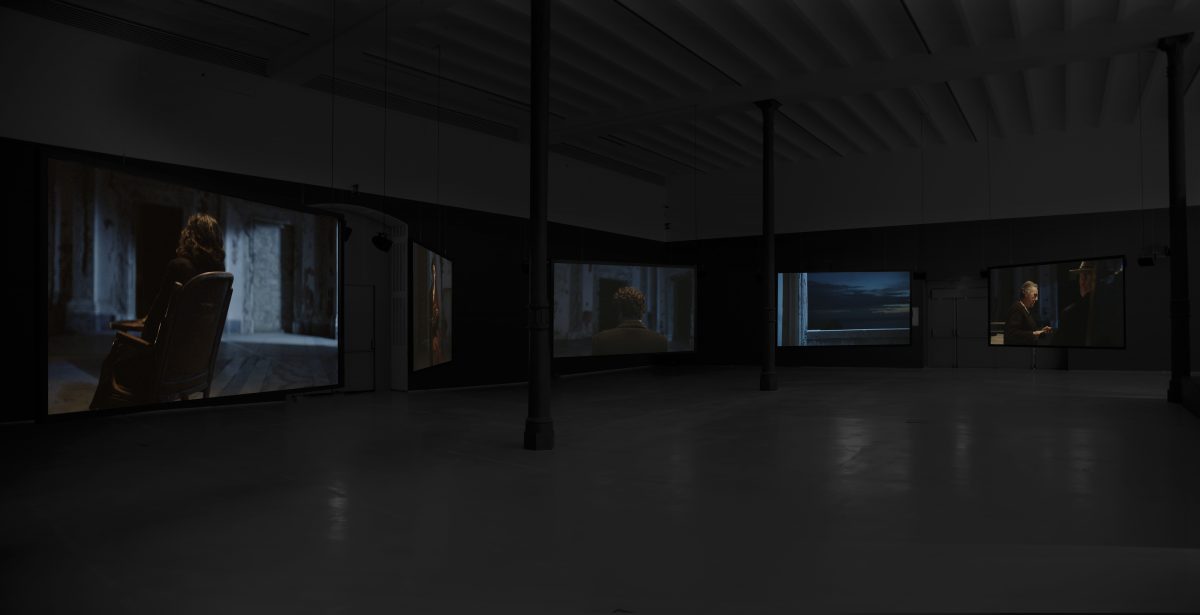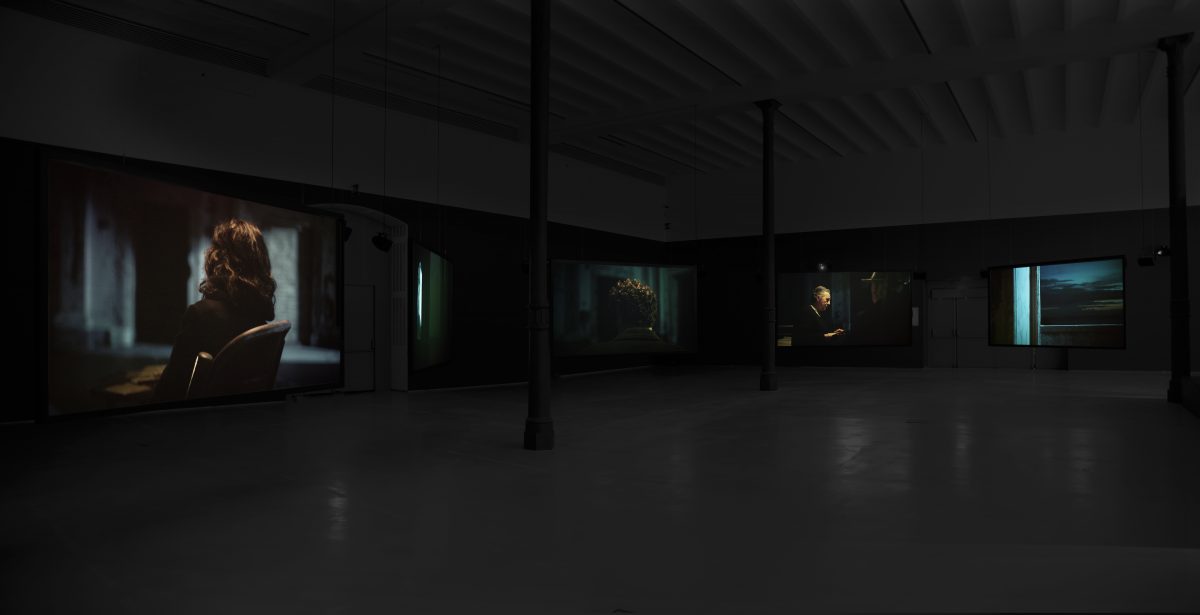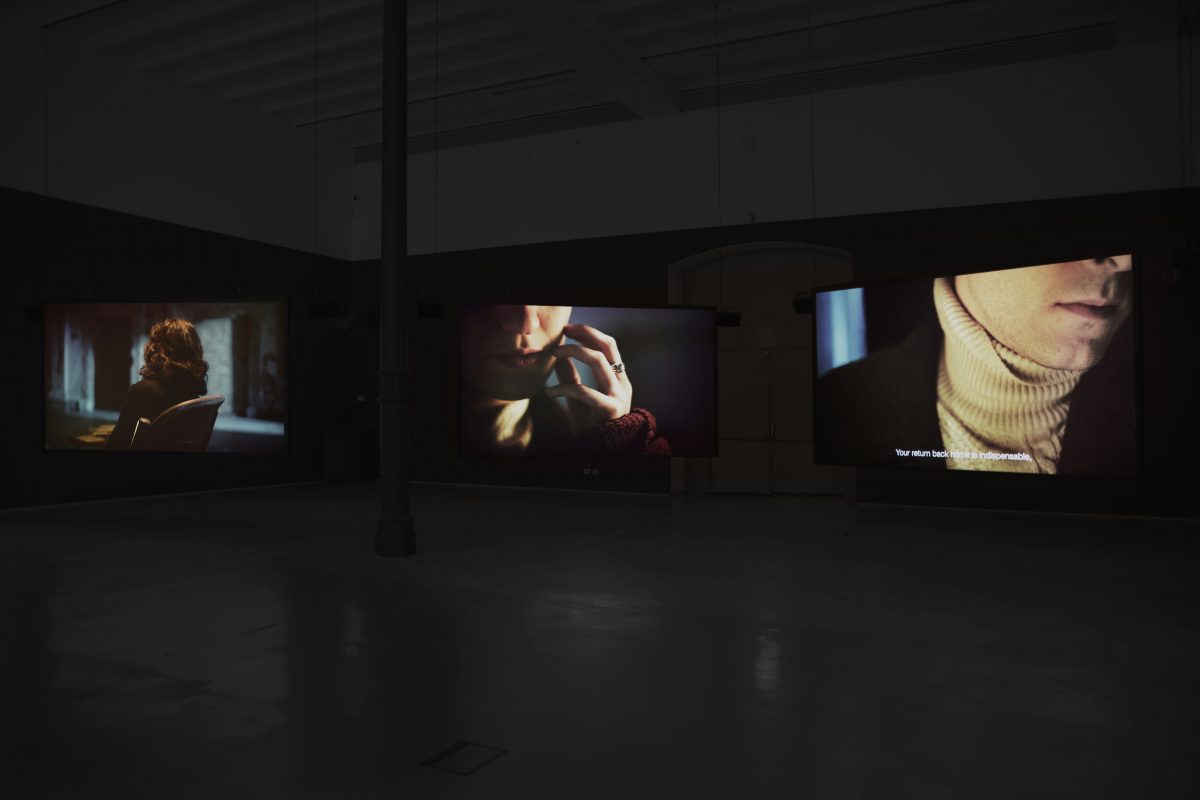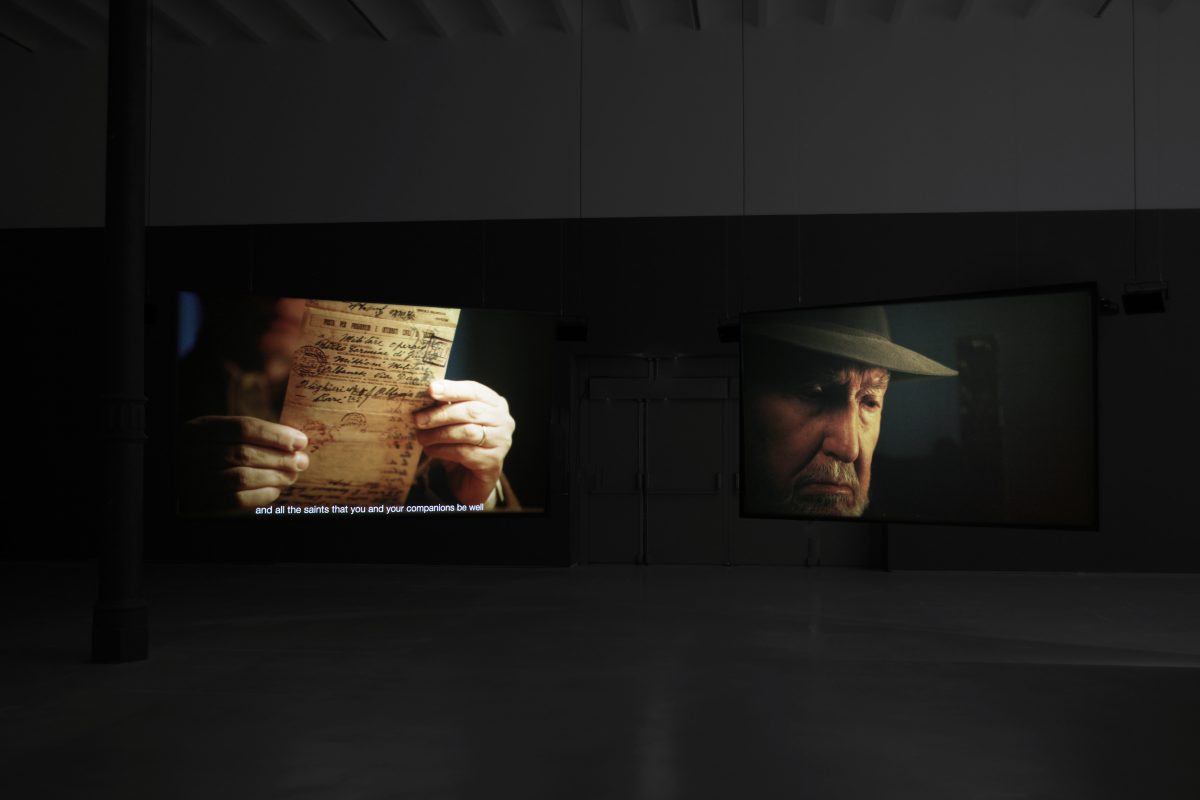
- This event has passed.
At the end of the Second World War, about 24,000 Italian citizens traveled to Albania to escape the Fascist occupation in Italy. Following Enver Hoxha authoritarian rise to power, these refugees were trapped in a foreign country, unable to get back home, treated as pawns in a political game that would last until 1949, when Italy and Albania established diplomatic relations.
At the end of the 2000s, the State Archive of Albania announced the discovery in its stores of two jute sacks labelled “Correspondence of Italian Citizens in Albania”. Hundreds of letters were found, mostly written between 1945 and 1946 by Italians awaiting repatriation, and by their relatives in Italy. Those letters never reached their destinations.
Adrian Paci’s and Roland Sejko’s installation Sue Proprie Mani is a meditation on history read through dramatic personal experiences, inspired by an event that would normally get lost in the folds of History. Filmed in the former palace of King Zog in Durazzo, Sue Proprie Mani comprises of five videos projected on large scale screens. The camera seeks, discovers and caresses six characters, each one holding a letter. Perhaps addressees, perhaps senders, perhaps only witnesses, they appear and disappear, while in the background we can hear fragments of those unread letters.
“Dear mother, three years have already gone by since we last saw each other, and sixteen months since I last received your news”. “After months and months since I last had your news about your arrival, I can no longer hide the truth, your father passed away eight months ago.”
Revealing messages that have never been read, Sue Proprie Mani brings a true story to light, elaborating its emotional and historical weight. The work investigates the universal nature of loss, incommunicability, and the eruption of historic events in personal fates.
Along with the video installation, prints of the letters are exhibited, creating an eloquent map of the traces of an interrupted communication.






